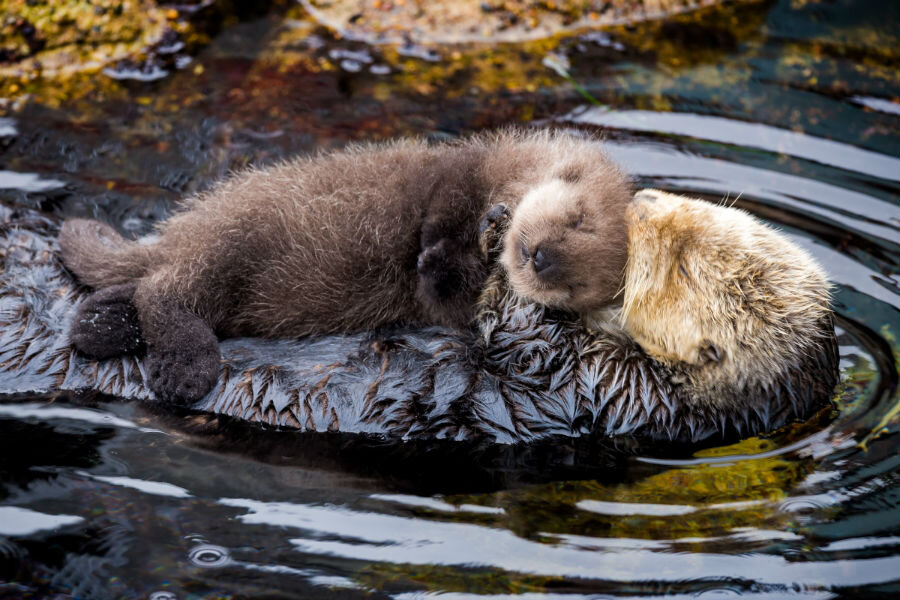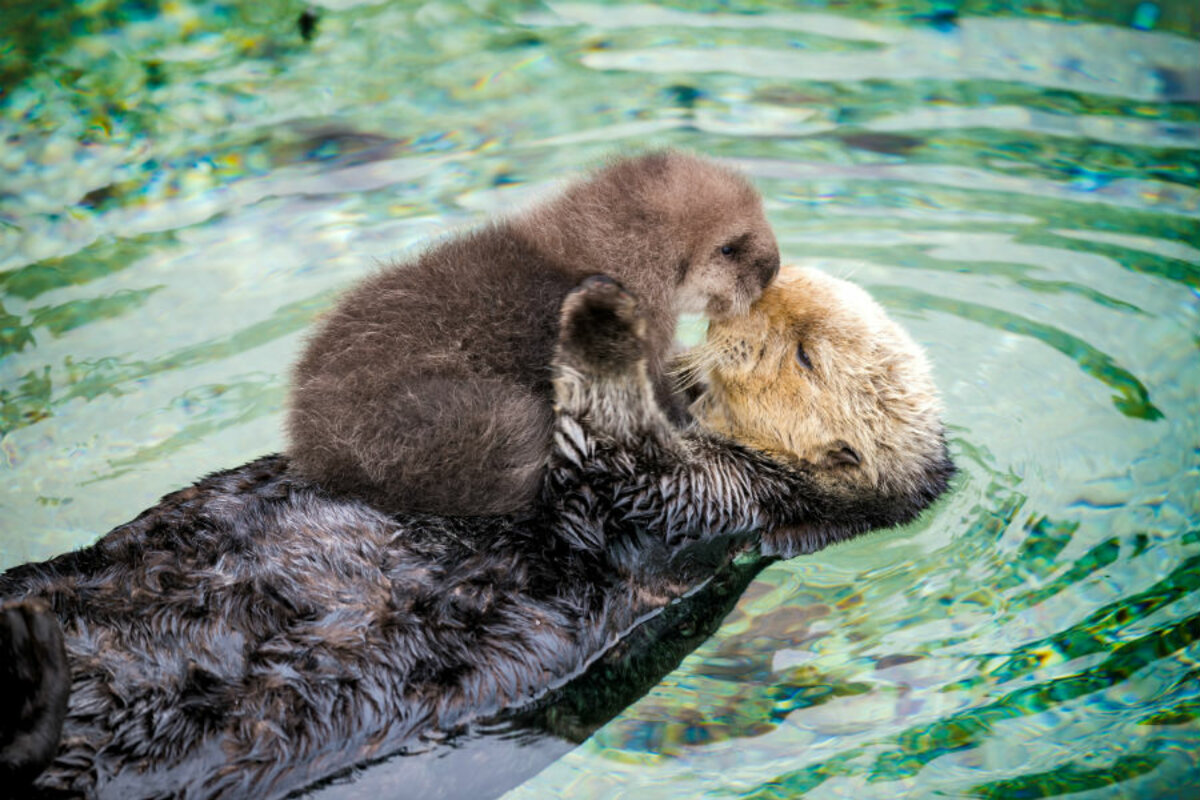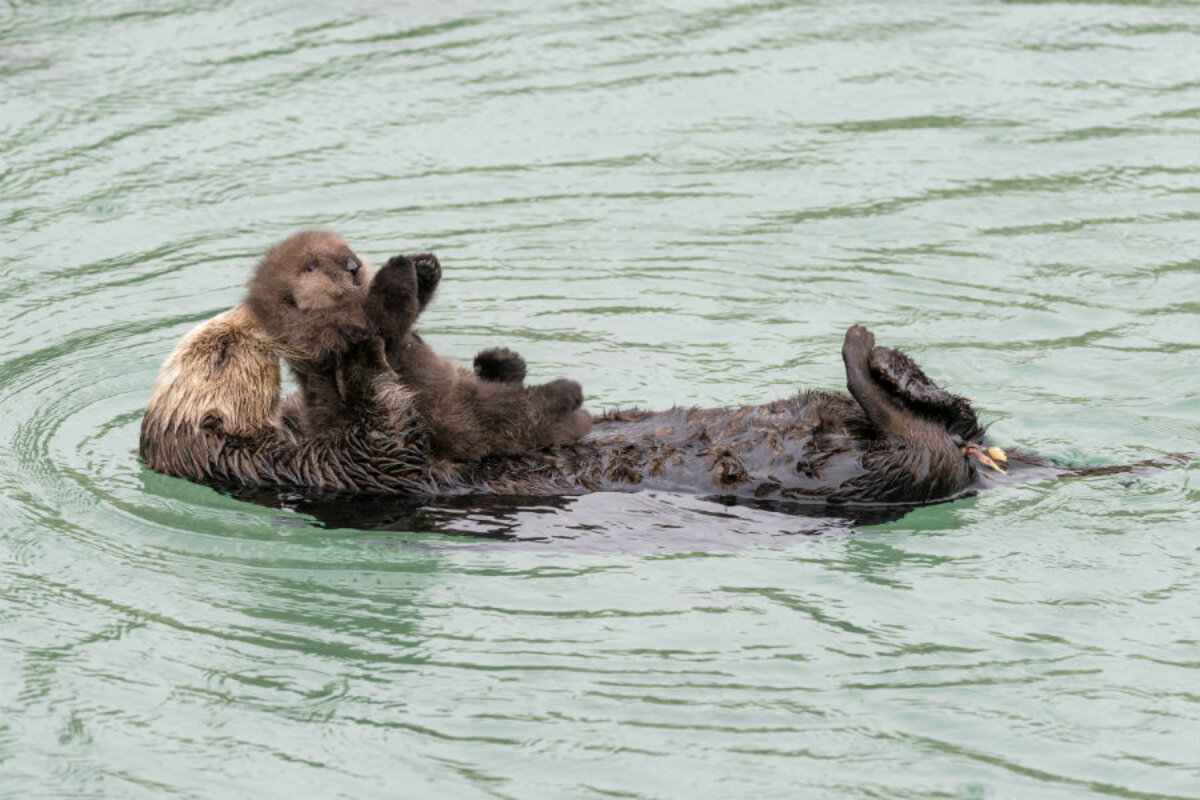Monterey Bay Aquarium welcomes fuzzy newborn otter (+photos)
Loading...
The Internet is swooning over images of a wild sea otter mom floating on her back in a tidal pool at the Monterey Bay Aquarium on the coast of California, cuddling a furry pup on her belly. The pup was born on Sunday in the protected basin of the Great Tidal Pool, where the otter mom came for a safe, calm place to deliver her baby.
Aquarium staff had assumed she had been showing up in the basin for several days to rest from the winter storms. But as it is rare for a healthy sea otter to visit the pool so frequently, they started to worry about her health, until they discovered that she had given birth.
“Well, mystery solved!,” wrote the aquarium on its blog. “Around 8:30 a.m., aquarium staff witnessed a BRAND NEW pup resting on her belly, being furiously groomed by a proud momma. We’re talking umbilical-chord-still-attached, whoa-is-that-yep-that’s-the-placenta new-born otter pup!”
The otter will use her body as the pup’s crib, carrying the baby on her chest until it’s about two months old. She’ll also spend hours a day grooming the pup’s coat to keep it waterproof and fluffy. Otters spend a lot of time grooming in order to waterproof their coats. They seal their fur with natural oils from their skin and fluff it with insulating air bubbles, the aquarium explains on its website.
Sea otters don't have a lot of blubber, like other sea mammals, so they keep warm in the cool ocean by wearing the world's densest fur, made up of more than a million hairs per square inch in the thickest areas, the aquarium points out. People on average have about 100,000 hairs on their heads, it says.
Sea otter, which is a member of the weasel family, is the smallest marine mammal in North America. The kind commonly found in California is the southern sea otter, which can be spotted along the state’s central coast.
Until recently, the animals were hunted to near extinction for their fur. There were about 50 left in California by in 1938. But thanks to conservation efforts, there are 3,000 of them living in central California today, though the animal is still considered “threatened” in the US.
The California aquarium reported on Twitter that the mom otter and baby have left the tidal pool to return to the wild:








